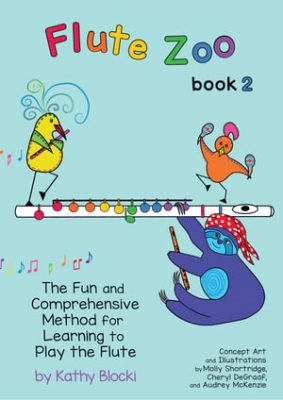Opens in a new window
Blocki Flute Method Flute Zoo Book 2 - Blocki - Flute - Book
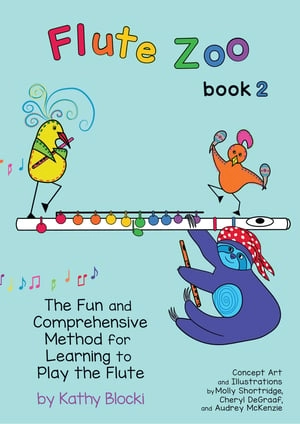
Additional Photos:
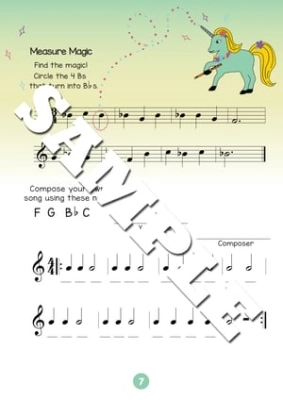
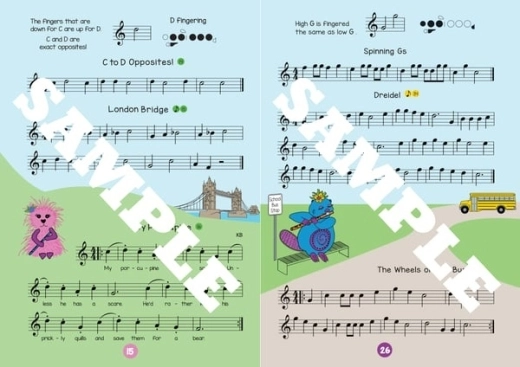
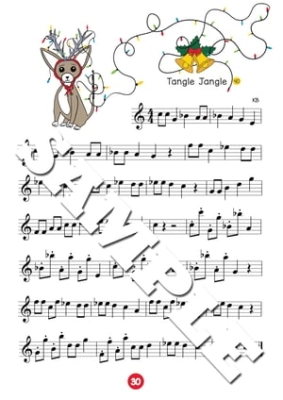
- Composer/Author: BLOCKI, KATHY
- Instrumentation: FLUTE
- Model # FZBOOK-2
Format: Book
Instrumentation: Flute
Flute Zoo Books are the new fun, and engaging way to learn to play the flute. These books, with their bright colours and cheerful imagery, were written with elementary age flute students in mind, although we have found that older children (and even adults) love the fun songs and activities as well! Each book is between 32 and 40 pages long. So the new flutist will gain a strong sense of accomplishments as they more quickly earn their certificate for Flute Zoo book one.
Flute Zoo Book 2
Book 2 begins with the notes C, B, A, G and F in both octaves. By the end of this 32 page books, students will have mastered from low E through high G, plus the notes that they already play in both octaves. In other words, students will have the satisfaction of being able to play many familiar melodies such as Happy Birthday and Mexican Hat Dance.
Many of the two page spreads are theme based. The opening pages feature an inspiring jungle theme. The first piece is Rounds of Tropical Rains with trils to represent the rain. Next is Treetop Slumbers with the sloth hanging from a branch. A pythom slinkes across the bottom of the page as the students are inspired to play the mysterious Perilous Pythons. A spinder monkey swings from a branch on the opposite page while students play Flying High and the all time favorite piece--Jungle Clown. The books continues with themed pages design to inspire students to portray the the ideas through the music. Each page is carefully sequenced to introduce new notes iand concepts so that students advance as smoothly as possible. Careful review is build into the book to insure mastery of the concepts.
The Flute Zoo Five-Note Fun Sticker book is the essential companion book for Flute Zoo Books 2 and 3.
The inside front cover has a blank music staff to use for note naming games. Both the Teacher's Manual and page 2 of the student Flute Zoo Book 2 give fun ideas for these games to reinforce note names.
On the last page of Flute Zoo Book 2 is a certificate of accomplishment that students can proudly display. Many of the songs also have a second part available in the Flute Zoo Duet Book. All the accompaniment tracks are available here or on YouTube.
The Flute Zoo Advantage
Tone: With Flute Zoo books students learn both high and low notes on the head joint. Playing in the high and low octave continues when students begin with the whole flute. This gives the new flutist an enormous advantage and teaches embouchure flexibility which is vital for becoming a great flute player. Teaching flute is not like teaching trumpet in which the high notes are more difficult. High notes become difficult when students only play in the low and middle octaves for as much as one year. The students then have trouble with embouchure flexibility, and the ability to form a smaller lip opening. Listen to this young beginner accidentally playing in three octaves!
Rhythm: Flute Zoo books 1-3 and the Five-Note Fun Sticker Book work together to insure a solid rhythmic foundation. Towards the end of Flute Zoo Book 2 students are reading rhythms that may appear simple, but imply more difficult rhythms. They learn how to play rhythms like a dotted quarter note followed by an eighth long before they actually read it. In Flute Zoo Book 3, students use the rhythm cards in the back of their book to first play these rhythms with tied eighth notes. Then the card is flipped over to reveal how the rhythm would be written without tied notes.
The Five-Note Fun Sticker Book helps to instill the ability to move between beat levels with ease. This foundation is essential for playing the complex rhythms they will encounter in Blocki Flute Method Book 3.
Creative Composing: These projects develop creativity and highlight the new concepts being learned. Each Flute Zoo Book contains several engaging composition activities.
What is the difference between Blocki Flute Method Book 1 and the Flute Zoo Book?
The content in the Blocki Flute Method Book 1 equals Flute Zoo Books 1, 2 and 3. The Flute Zoo books move at a slightly slower pace and are shorter giving a sense of accomplishment as they finish each book more quickly. The Flute Zoo Five-Note Fun Sticker Book is essential to the Flute Zoo series but can also be used with the Blocki Flute Method Book 1.
After working through all four Flute Zoo books, students will be ready to start in Blocki Flute Method Book 2. The Blocki Flute method was designed to give the beginner an excellent foundation in beautiful tone, embouchure flexibility, rhythm and technique. This comprehensive and step-by-step approach was written to ensure success and includes theory and composition projects.
Q & A
There are currently no questions for this product.
Reviews
There are currently no reviews for this product. Be the first to write one!



